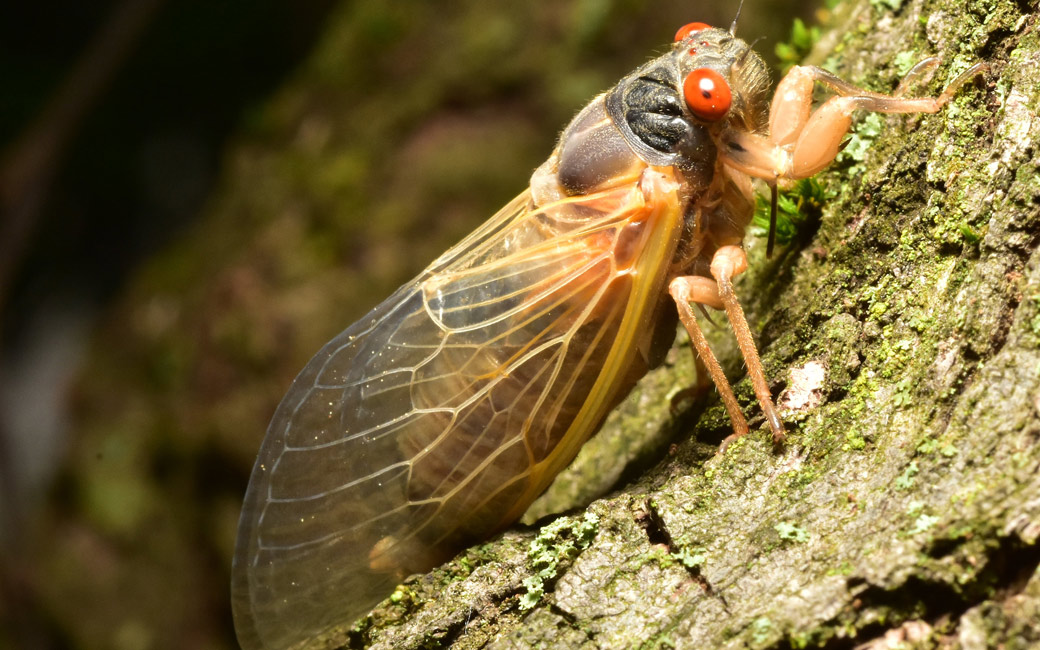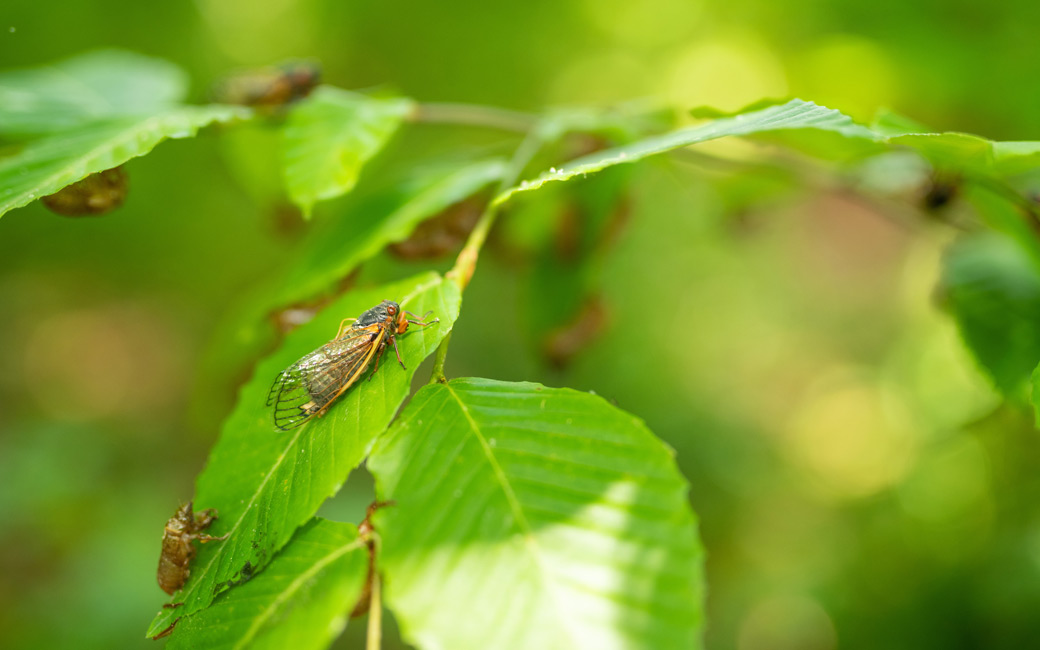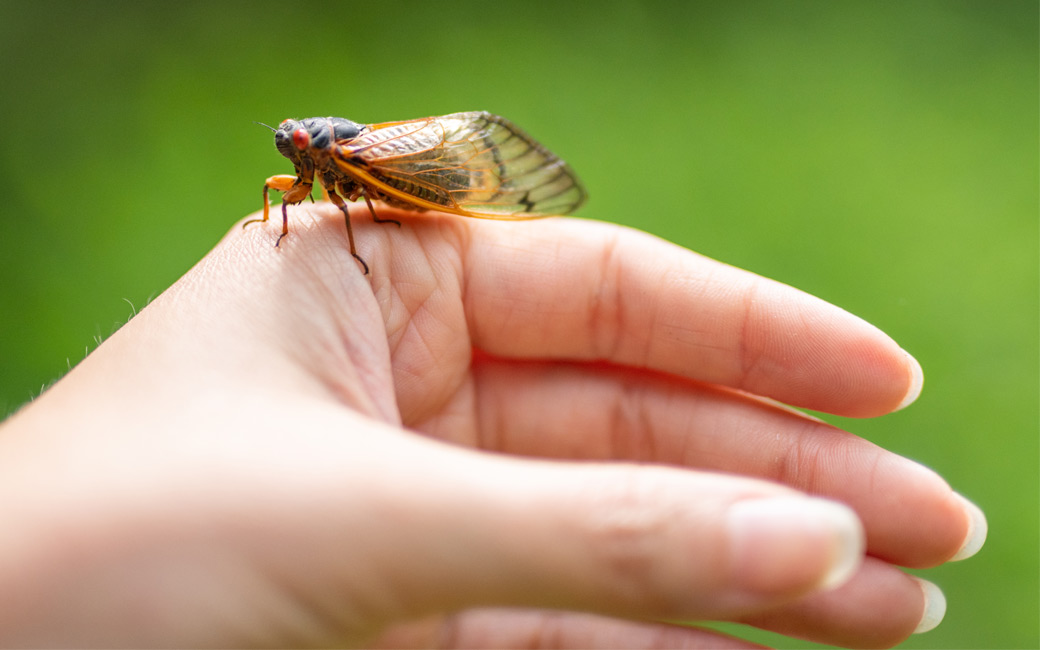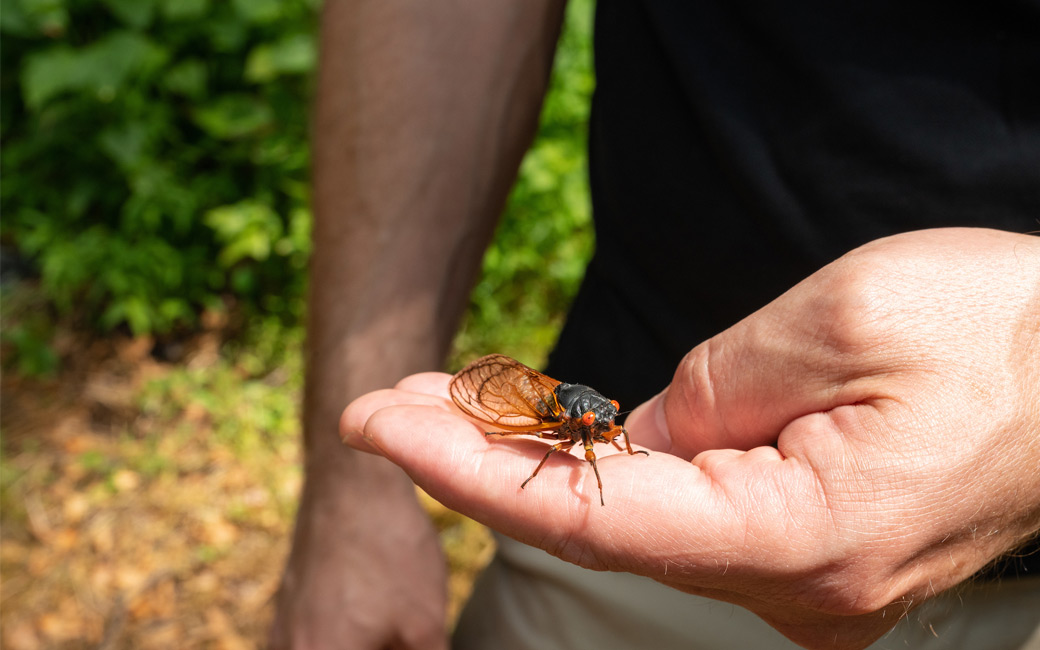
Understanding Brood X
TU entomologist explains the ‘drama’ in your backyard
By Cody Boteler and Roy Henry on June 3, 2021
It’s a muggy morning in late May and Towson University’s John Lapolla, a professor in the Department of Biological Sciences, is hunting for cicadas in the Glen Arboretum.
Up in the trees, some of the insects flit between branches. The ground is covered in small holes that the cicadas emerged from. And everywhere they are droning, a constant hum that sounds like a car alarm or the tide coming in on the beach.
“This is like the love song of the cicadas,” says Lapolla. “They’re all mating up in the trees.”
These cicadas are periodical, meaning they only emerge in certain years. This group, known as Brood X ("ten," not "ex") lives and dies on a 17-year schedule. Brood X covers most of Maryland and parts of Virginia, Pennsylvania, Ohio and Indiana. It's the largest, and therefore noisiest, brood of periodical cicada.
Female cicadas lay eggs in thin tree branches. One the eggs hatch, the tiny larvae—about the size of grains of rice—drop from the trees and burrow underground.
“Through mechanisms that are not entirely clear, they then emerge after 17 years,” Lapolla says.
There are a couple of theories around why the insects developed such an oddly specific cycle. One is that, by becoming undetectable for nearly two decades, there are very few, if any, predators that can track the cicadas and depend on them as a food source.
Another is a tactic called “predator satiation.” By emerging in such huge numbers—more than 1 million cicadas per acre, by some estimates—the insects overwhelm predators because there is only so much that a bird or small mammal can eat. Since there are too many cicadas for the larger animals to eat, some will always survive to lay eggs and generate the next brood.
One of the few predators that tracks the cicadas’ 17-year cycle is a type of fungus called Massospora that lies dormant while the cicadas are underground and infects them when they emerge.
The fungus causes cicadas to mimic mating behaviors. The catch, though, is that the infection causes the insects to physically lose their lower abdomen and reproductive organs. Instead, the infected cicadas—kicked into “hyperdrive,” according to NPR—spread the fungus to others.
From their adherence to a 17-year calendar to their coordinated mass emergence to their noise, the cicadas are an excellent reminder of the “drama” occurring all over nature, Lapolla says.
A person doesn’t have to go on a safari or see the Amazon Rainforest to witness nature’s wonders.
“There is drama occurring in your backyard,” Lapolla says. “There’s nowhere else in the world where you get this phenomenon.”
For Lapolla, the drama of the cicadas’ emergence, and the unavoidable noise they produce, are a reminder of insects’ importance to life.
“The world would be fine if humans disappeared tomorrow,” Lapolla says. “If insects disappeared tomorrow, the terrestrial realm would collapse. It just couldn’t function without insects.”




